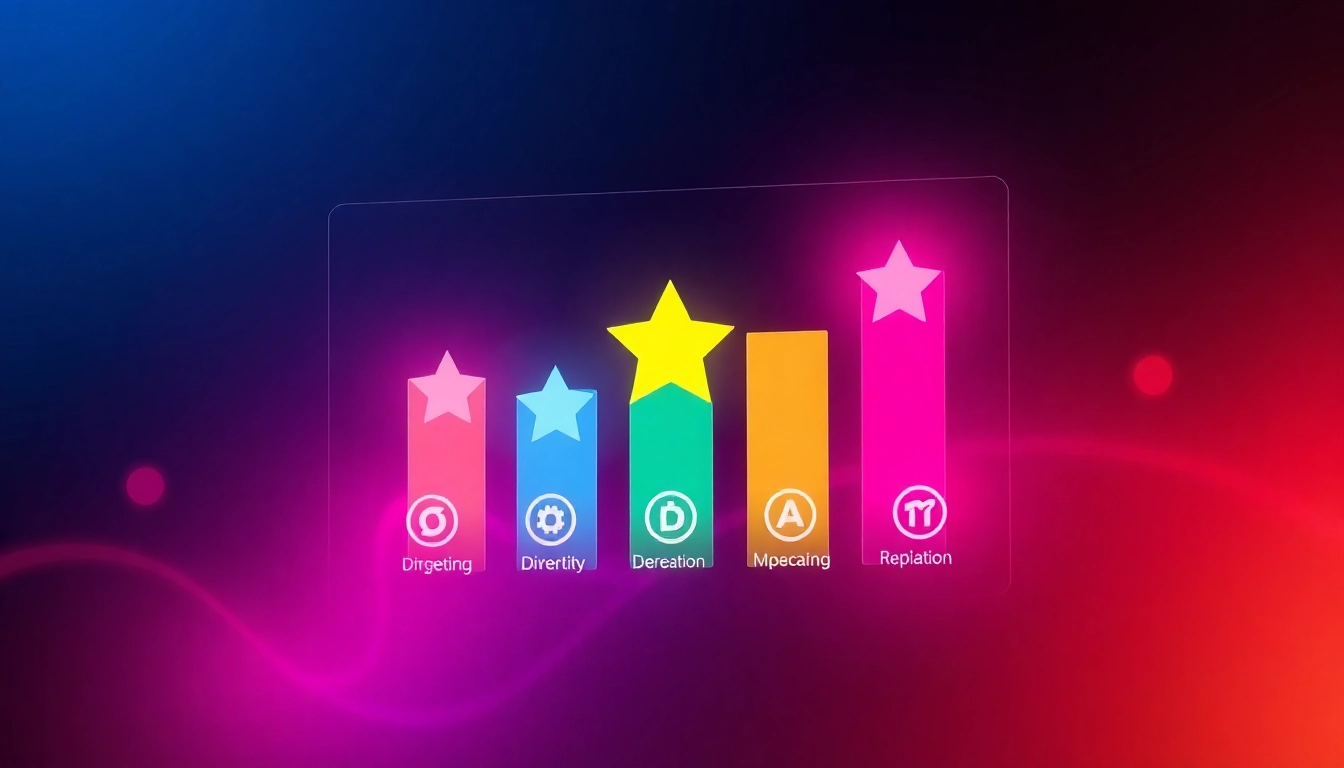
Introduction to the Token Rating System
The digital landscape has evolved immensely in recent years, with blockchain technology and cryptocurrencies leading the charge in revolutionary advancements. Amid this evolution, understanding the reliability and investment potential of various tokens has become crucial. This is where a token rating system comes into play. Such systems provide a structured approach to assess and evaluate digital assets, helping investors navigate the complex world of blockchain projects.
What is a Token Rating System?
A token rating system is a framework used to evaluate the quality and potential of cryptocurrencies and digital tokens. These systems leverage various metrics and criteria to assign ratings, which can include letters or numeric scales. By examining factors like market capitalization, technology, team credibility, and community support, token rating systems serve as a valuable tool for investors seeking to make informed decisions in the crypto market.
Importance of Token Ratings in Blockchain
Token ratings play a pivotal role in increasing transparency and trust within the blockchain ecosystem. With thousands of tokens available, distinguishing promising projects from those that may be scams or underperformers is vital for investors. High-quality token ratings can guide users toward projects with strong fundamentals, ultimately fostering a healthier market characterized by informed investment decisions.
Key Features of Effective Token Rating Systems
For a token rating system to be effective, it must incorporate several core features:
- Comprehensive Criteria: A robust system evaluates multiple aspects of a token, including its technology, market performance, and regulatory status.
- Real-Time Data: Continuous updates based on market fluctuations ensure that ratings remain relevant and accurate.
- Transparency: Offering clarity on how ratings are determined bolsters user trust and confidence in the system.
- User Engagement: Incorporating feedback from the community can enhance the reliability of the rating process.
How Token Rating Systems Work
Understanding the Rating Criteria
Token rating systems typically use a combination of objective and subjective criteria. Objective measures can include financial metrics such as trading volume and price volatility, while subjective evaluations often involve expert opinions on the project’s viability and the team behind it. The combination allows for a holistic view, making ratings more representative of the token’s true potential.
Evaluating Token Performance Metrics
To gain a complete understanding of a token’s performance, a variety of metrics should be assessed, including:
- Market Capitalization: The total market value of a token can indicate its popularity and investor confidence.
- Liquidity: High liquidity often suggests an active market and higher investor interest.
- Historical Price Trends: Analyzing past performance helps gauge future potential despite inherent market risks.
Integrating User Feedback into Ratings
Community feedback is invaluable in refining token ratings. By allowing users to share their experiences and insights, systems can enhance their evaluations. This participatory approach ensures that the ratings reflect current sentiments and realities in the crypto space.
Common Challenges in Token Rating
Addressing Bias and Misinformation
One of the most significant challenges in rating tokens lies in combating biases. Analytical frameworks can sometimes reflect the biases of their creators or be swayed by market sentiment. Additionally, misinformation can spread rapidly in the crypto space, leading to skewed perceptions. Implementing robust verification processes and promoting transparency can mitigate these challenges.
Overcoming Technical Limitations
Rating systems often face technical challenges due to fluctuating data and rapidly changing market conditions. Establishing partnerships with data providers and employing advanced analytics can help enhance the accuracy and reliability of the ratings.
Ensuring Consistency in Ratings
Consistency is critical for any rating system. Variability in ratings can confuse investors and undermine trust in the system. Standardizing evaluation methods and regularly revisiting rating criteria to adapt to market changes can address this challenge effectively.
Best Practices for Implementing a Token Rating System
Tips for Accurate Ratings
To ensure accuracy in token ratings, consider these best practices:
- Utilize a multi-faceted approach that includes quantitative metrics and qualitative assessments.
- Regularly update ratings based on new data and developments to maintain relevance.
- Engage with the community to validate findings and incorporate diverse perspectives.
Leveraging Analytics for Improvement
Incorporating data analytics tools can significantly empower token rating systems. By analyzing vast amounts of data, these tools can reveal trends and insights that manual evaluations might miss. Machine learning algorithms, for instance, can identify patterns linking a token’s rating to its subsequent market performance.
Engaging the Community in the Rating Process
Fostering an inclusive environment promotes transparency and trust in a token rating system. Encourage users to share their insights and experiences, creating a collaborative ecosystem that enhances the reliability of the ratings. Implementing feedback loops, where user inputs directly influence system evaluations, will ensure the ratings resonate with the community.
The Future of Token Ratings
Trends Shaping Token Rating Systems
As the blockchain ecosystem continues to evolve, token rating systems will have to adapt. Emerging trends that may shape the future of these evaluation frameworks include:
- Increased Focus on Regulatory Compliance: As regulations become more stringent, rating systems will need to prioritize compliance metrics and assess the legal standing of tokens.
- Hybrid Evaluation Models: The integration of traditional financial analysis methods with blockchain-specific criteria will create more holistic rating systems.
- Evolving User Expectations: As crypto literacy improves, users will demand more sophisticated and nuanced ratings, driving systems to evolve accordingly.
The Role of AI in Token Evaluation
Artificial intelligence stands to revolutionize the evaluation of tokens. Machine learning algorithms can analyze vast datasets quickly, revealing hidden patterns and insights. This technology can automate parts of the rating process, making it more efficient and less prone to human errors. Furthermore, AI can facilitate predictive analytics, estimating future performance based on historic trends.
Building Trust through Transparency and Accountability
The demand for transparency and accountability in token ratings will likely grow as the blockchain space matures. Rating systems that make their methodologies, updates, and data sources clear will garner greater trust from users. Regularly communicating changes and improvements can further enhance credibility and user engagement.